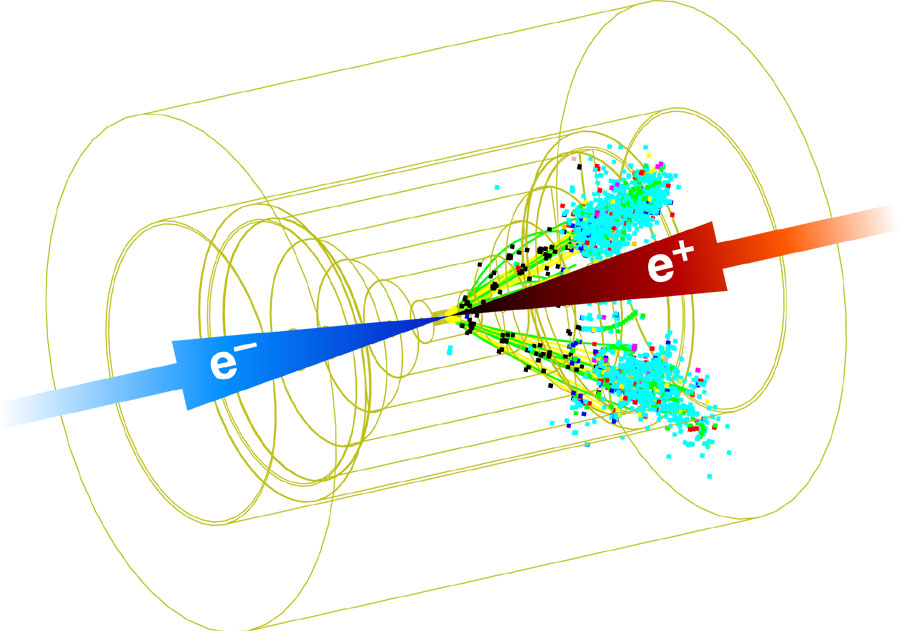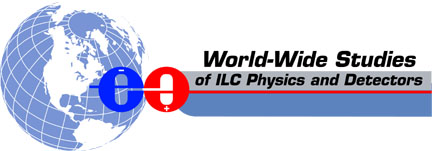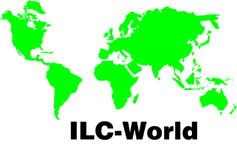|
WORKSHOP |
Click HERE
for the Detailed Session Program.
A "Mini-Workshop on ATF2" will also be held January 5. The ATF2 proposal
is being developed to test the compact final focus optics scheme and achieve
35-nm spotsize at KEK's ATF.
Main Topics (session convenors are listed)
- Crossing Angles for the 2 IRs (Andrei Seryi, Toshiaki Tauchi)
Click here for preliminary list of talks and background material.- Considerations for physics options and detector concepts
- Considerations for fixed target experiments
- Considerations for beam instrumentation
- Considerations for hermeticity, electron ID and 2-photon veto
- Considerations for collimation and backgrounds
- Considerations for engineering (civil, mechanical)
- Backgrounds (Karsten Büsser, Takashi
Maruyama)
Click here for preliminary list of talks- For different x-angle, final doublet configurations
- Synchrotron radiation in IR
- Beam-beam backgrounds
- Backshine from extraction line beam losses and beam dump
- VXD radius
- Energy Spectrometers and Lumi Spectrum determination (Stewart Boogert,
Kiyoshi Kubo)
Click here for background material.
Click here for preliminary list of talks- BPM spectrometers
- Synchrotron stripe spectrometers
- Laserwire in extraction line for energy spread
- R&D, beam tests needed
- Polarimetry (Ken Moffeit, Klaus Mönig)
Click here for background material.
Click here for preliminary list of talks.- Requirements on beam optics for upstream and downstream Compton polarimeters
- Motivation for polarimetry both upstream and downstream
- Spin transport effects and modeling
- Luminosity-weighted polarization differences from polarimetry measurements
- Very Forward Region <~40 mrad (Wolfgang Lohmann, Hitoshi Yamamoto)
Click here for preliminary list of talks and background material.- Physics requirements (electron ID, 2-photon veto)
- Accelerator requirements (fast lumi monitor and collision diagnostics)
- Detector technologies proposed
- R&D, beam tests needed
- Beam rf Effects (Mike Woods)
Click here for preliminary list of talks and background material.- EMI -- electro-magnetic interference for Detector and Beam Instrumentation signal processing
- beampipe heating and backgrounds resulting from dynamic vacuum pressure and beam-gas collisions
- Experience at SLC, PEP-II, KEK-B, HERA
- Impact on VXD design
- R&D, beam tests needed
Connected Topics
We will have a general overview talk on each
of these by the designated speaker.
- Beam Optics Design, Beam Collimation, Final Doublet, Beam Dumps; Shigeru Kuroda
- IP Collision Diagnostics & Luminosity Optimization; Philip Burrows
- Physics Options (g-g, e-e-, Giga-Z, e+ polarized, beyond 1 TeV, simultaneous running of 2 IRs); Albert de Roeck
- Detector Concepts (SiD, Large and HUGE gaseous Detectors); Mark
Oreglia
NOTES
1. Talks will have time for short discussion, separate from discussion periods.
2. We want to evaluate specific beam optics, collimation, final doublet, and crossing angle designs. These designs are specified by the BDIR accelerator physicists, whose work is discussed in WG4 at the KEK ILC November Workshop. Our evaluation of these designs emphasizes the impact on the ILC Detectors and Physics, beyond just the delivered luminosity. We intend to focus on evaluation of the designs, but not go into great detail on the accelerator and engineering design.
3. We should avoid detailed presentations on work that has already been presented. We should assume everyone is expert on the issues. Prior to the Workshop, we need to give good references/links for background material necessary for the discussions at the meeting.
4. We need to consider impact on specific physics topics, beyond general figure-of-merit considerations. Examples: i) statistical and systematic errors on masses of top, Higgs, chargino … ii) stau-neutralino mass difference in co-annihilation region and impact on estimating OMEGA(Dark Matter).
5. Prior to the Workshop we want to do specific studies: for example on 300-mrad vertical and 2-mrad horizontal crossing angles. We should have viability studies done for these, looking at backgrounds from SR, pairs and beamsstrahlung photons and considering the beam stayclears.
-- return to top --




